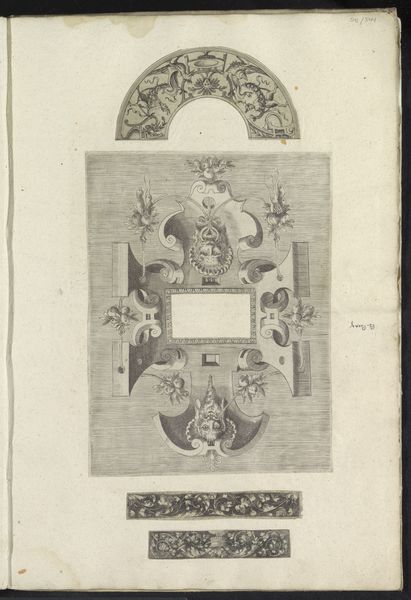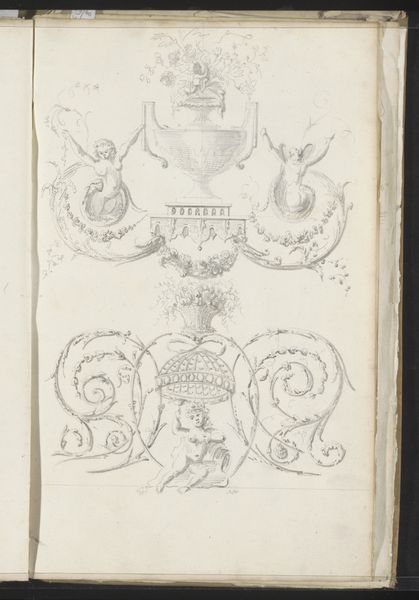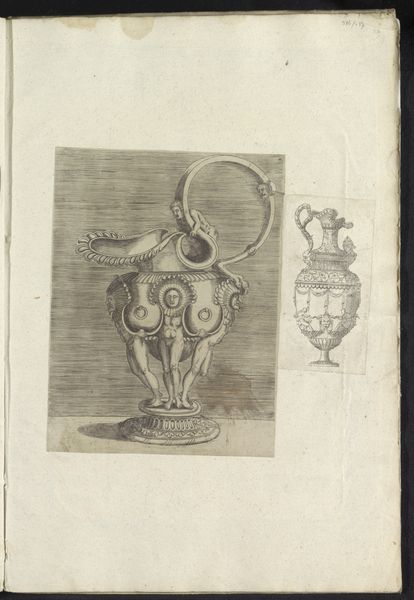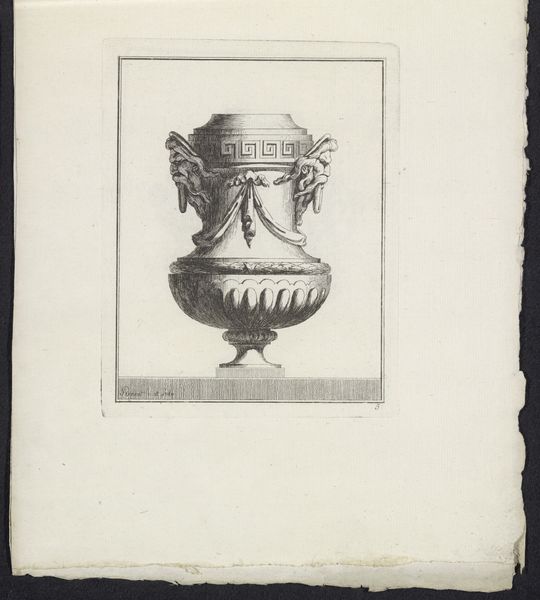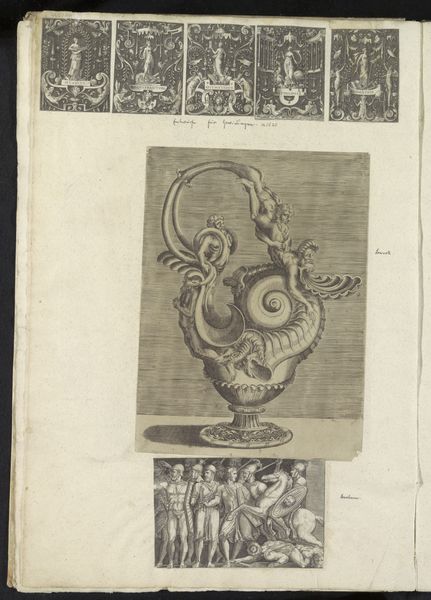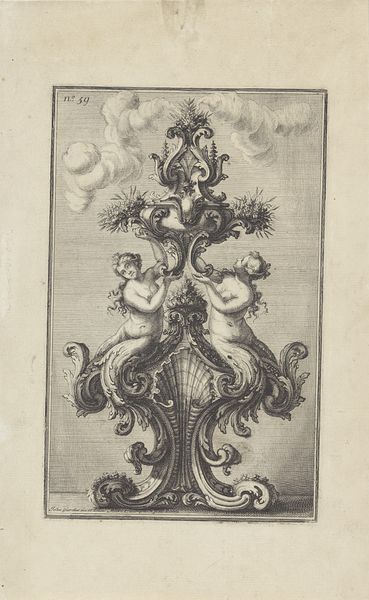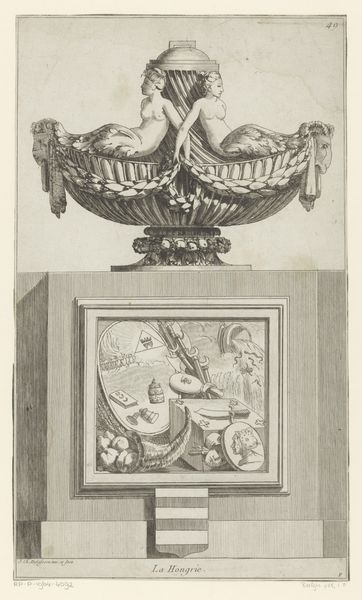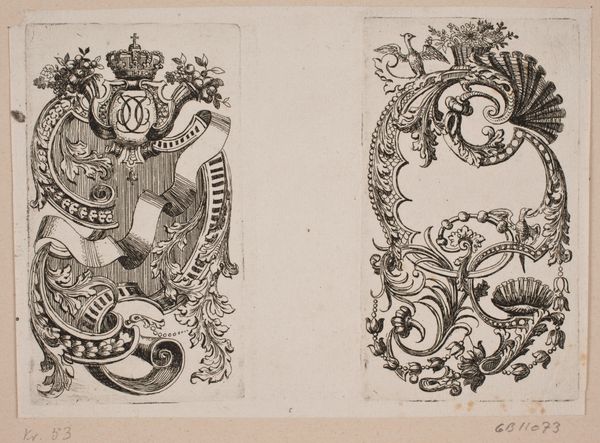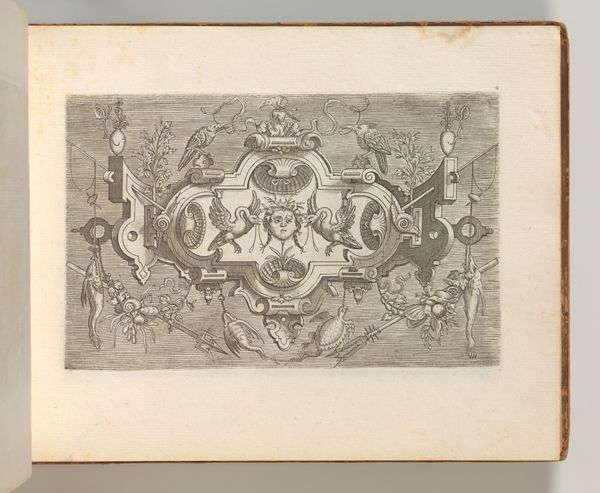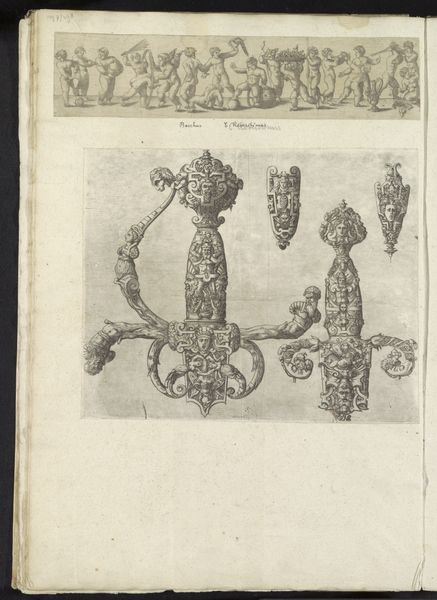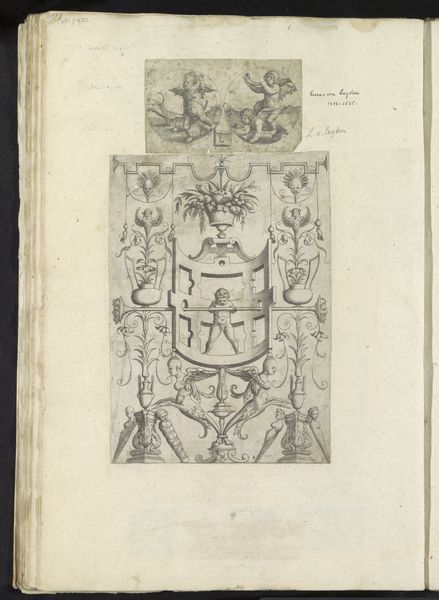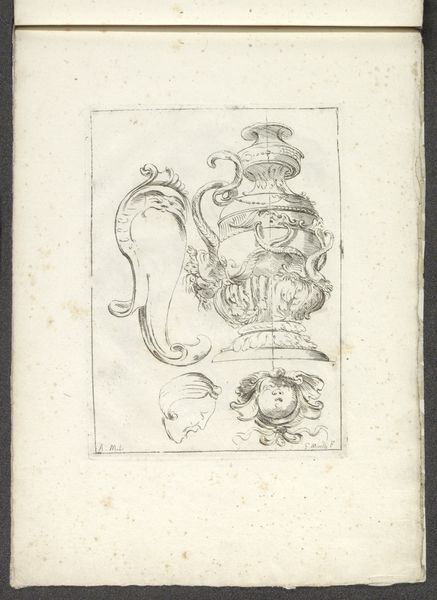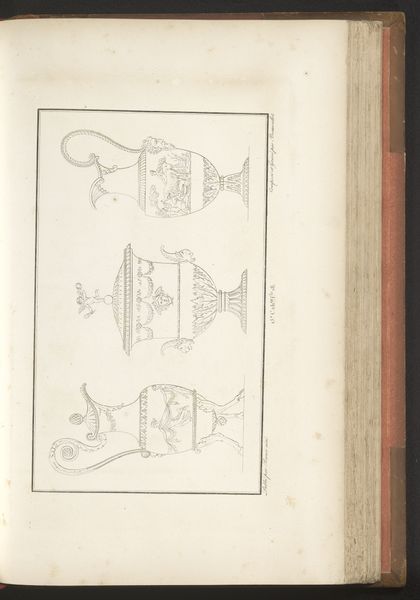
Albumblad met twee prenten met een kan en een ornamentele halve cirkel 16th century
0:00
0:00
drawing, print, ink, engraving
#
drawing
# print
#
pen sketch
#
11_renaissance
#
ink
#
geometric
#
pen-ink sketch
#
engraving
Dimensions: height 430 mm, width 292 mm
Copyright: Rijks Museum: Open Domain
Editor: Here we have a page from an album by Balthazar van den Bos, dating back to the 16th century. It features two prints: one of a fantastical ewer, and the other a geometric design. Both are created with ink, in the style of engraving. I am intrigued by the emphasis on ornamentation and how it plays with form. What strikes you about this sheet? Curator: I see a fascinating display of material culture rendered through the technologies of printmaking. The image becomes a document, revealing social aspirations towards luxury goods during the Renaissance. What can the reproduction and dissemination of images like these tell us about workshops, labor and consumption in 16th century Europe? Editor: That's interesting, I hadn’t considered the production aspect of it. Does the choice of engraving, over other printing methods, tell us something specific? Curator: Absolutely. Engraving, requiring highly skilled labor and specialized tools, points to a specific market. These prints were not mass-produced ephemera. Rather, they represent luxury items that signal elevated cultural capital. Consider how these images, circulated in albums, acted as pattern books or aspirational catalogues. Were they tools to elevate the engraver’s status as skilled tradesmen? Editor: So, these images served not just as art, but almost like proto-industrial design blueprints? The act of reproducing them highlights the value placed on craftsmanship and material wealth. Curator: Precisely! The materiality of the print – the paper, the ink, the very act of engraving – speaks volumes about the social and economic forces at play. It challenges us to think beyond aesthetics. Editor: This has opened up a new way of thinking about art objects as a record of manufacturing and cultural desires of the time. Thanks! Curator: And thank you. By focusing on process, materials, and social context, we move closer to understanding the true power and importance of these artifacts.
Comments
No comments
Be the first to comment and join the conversation on the ultimate creative platform.
